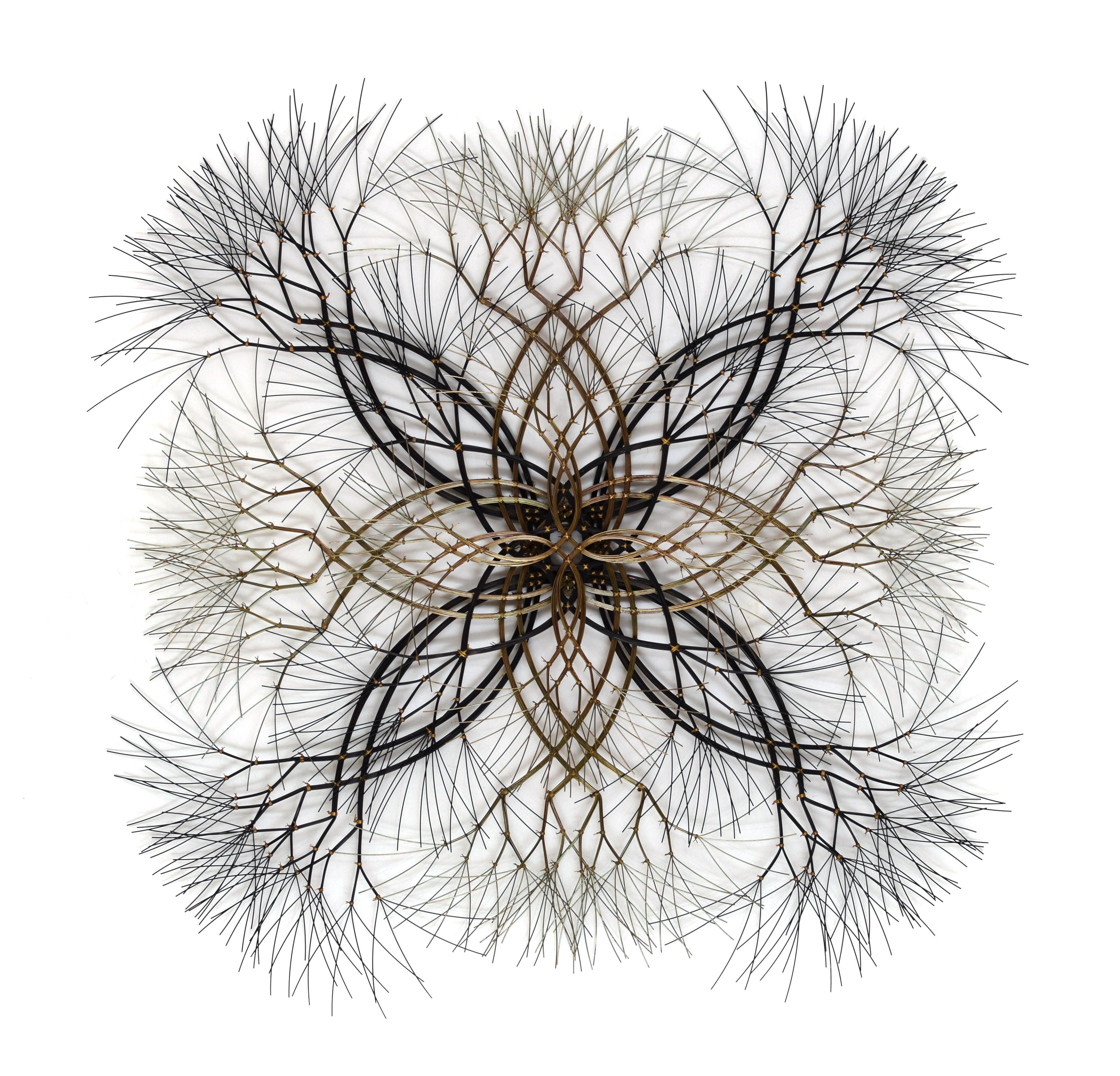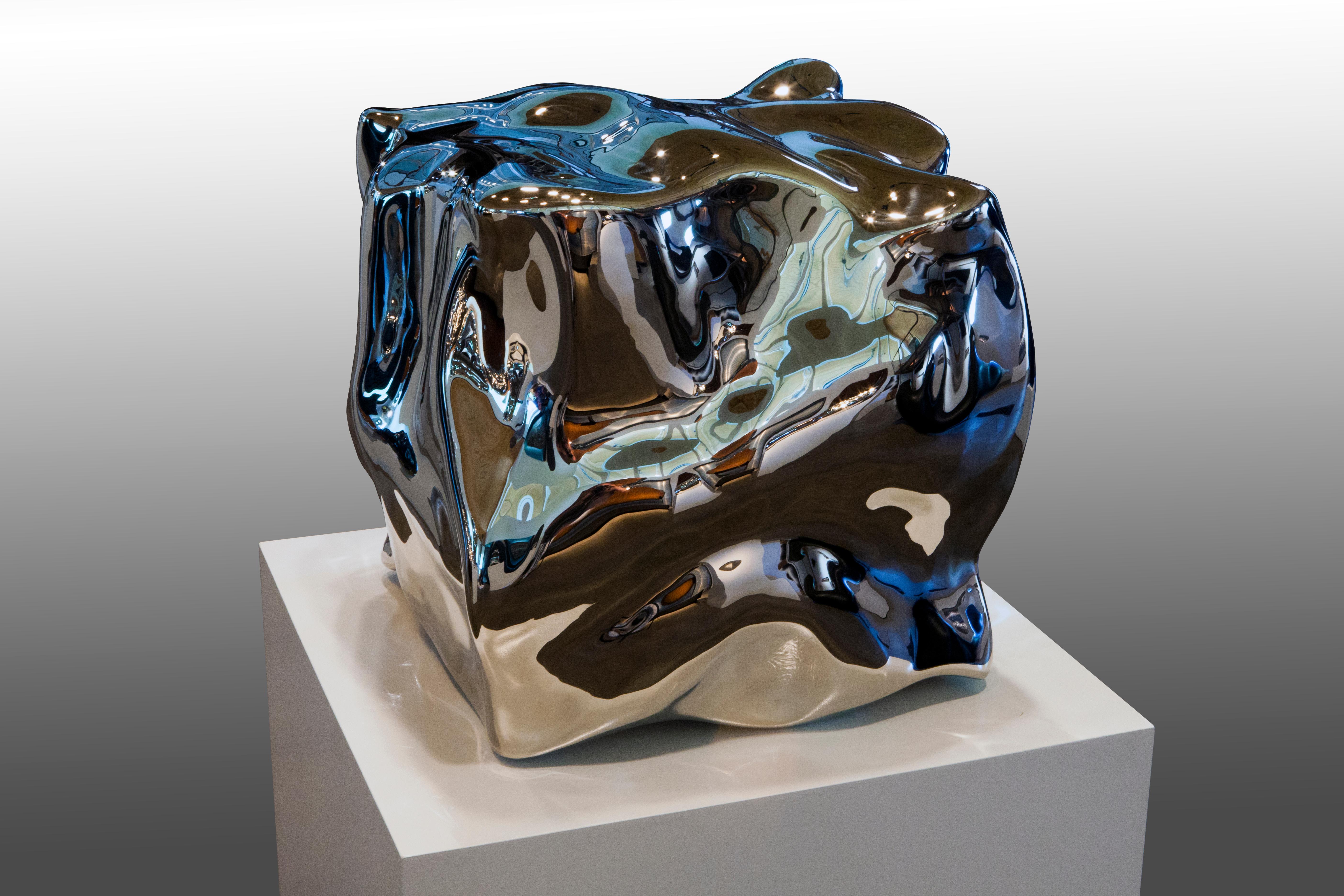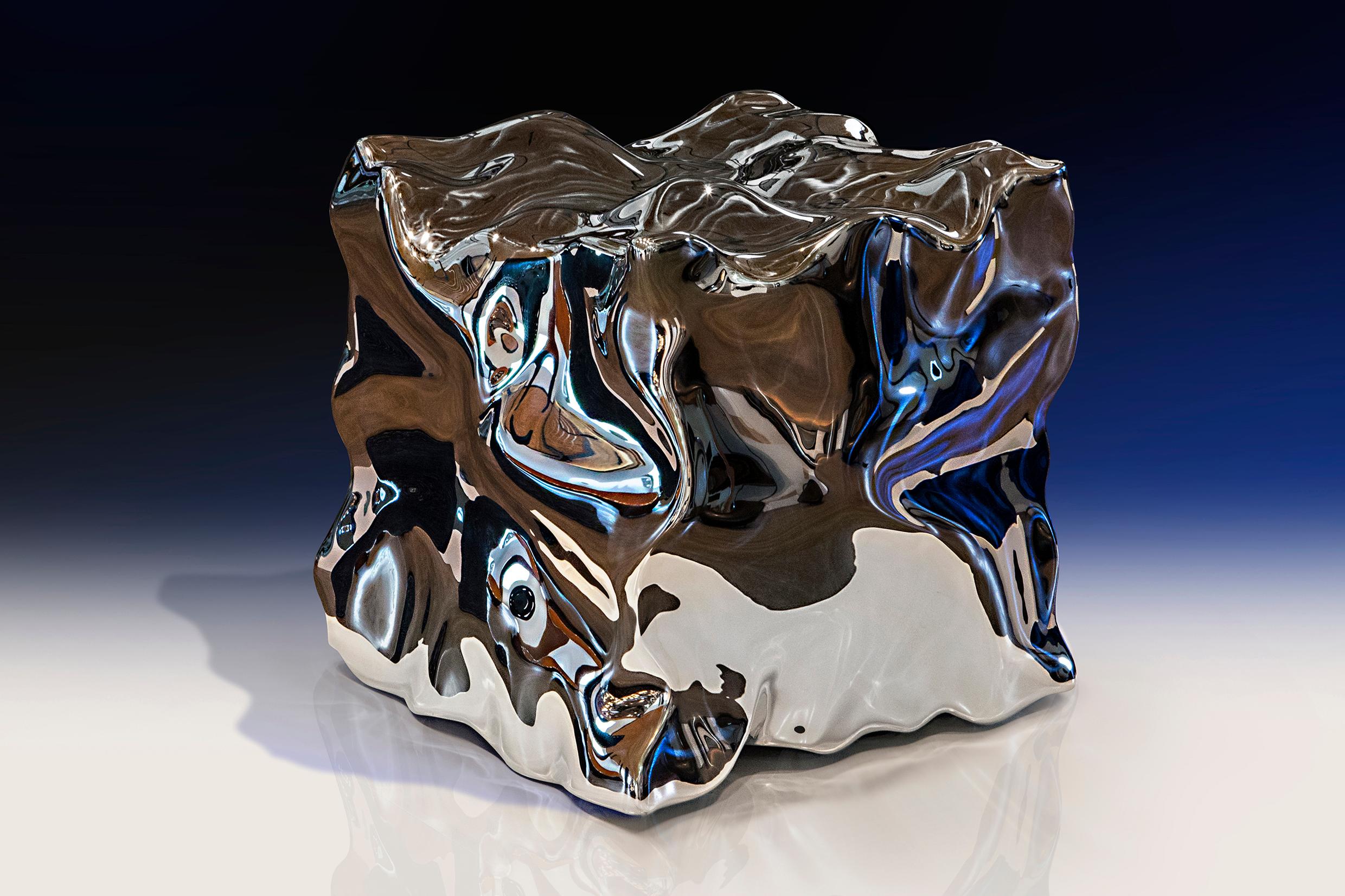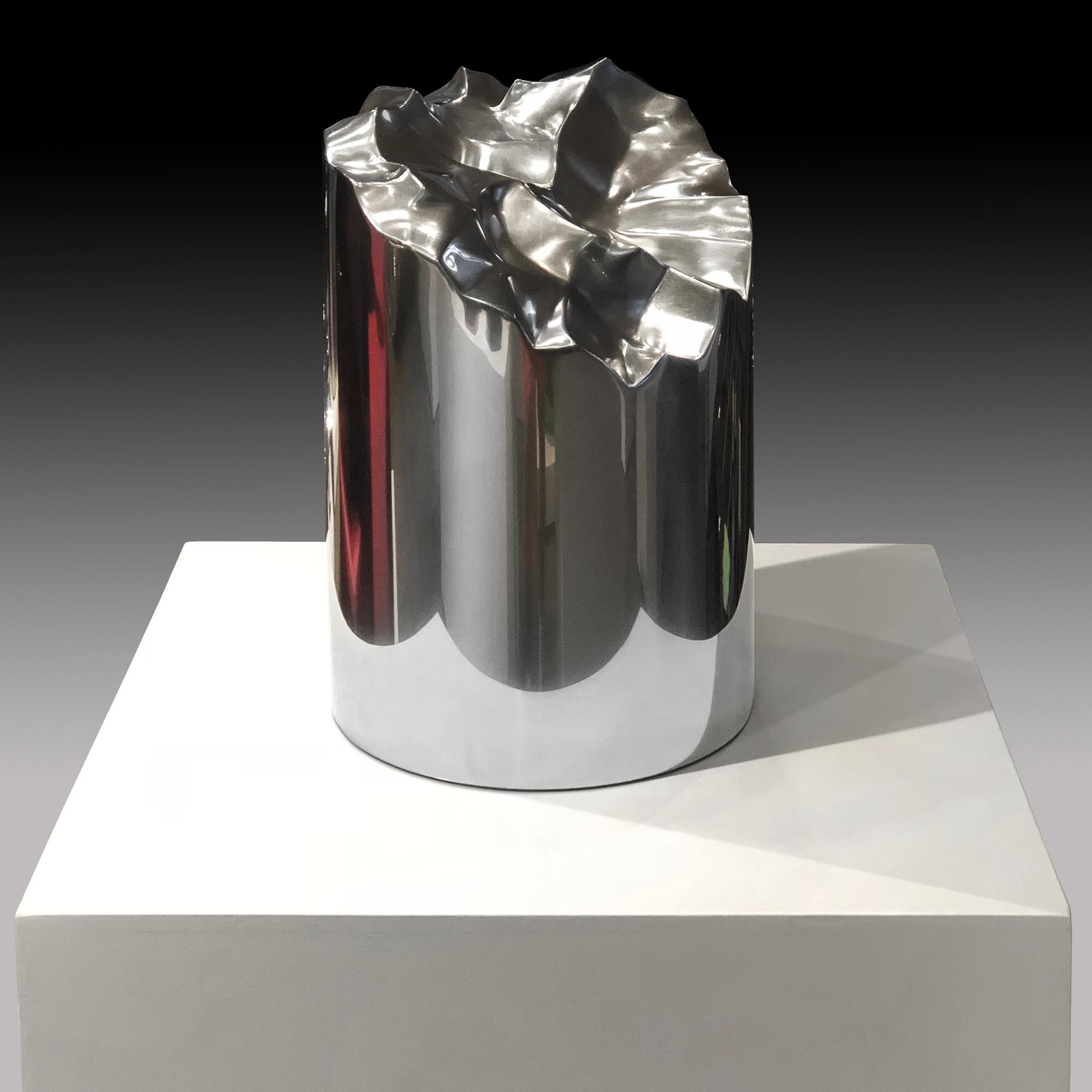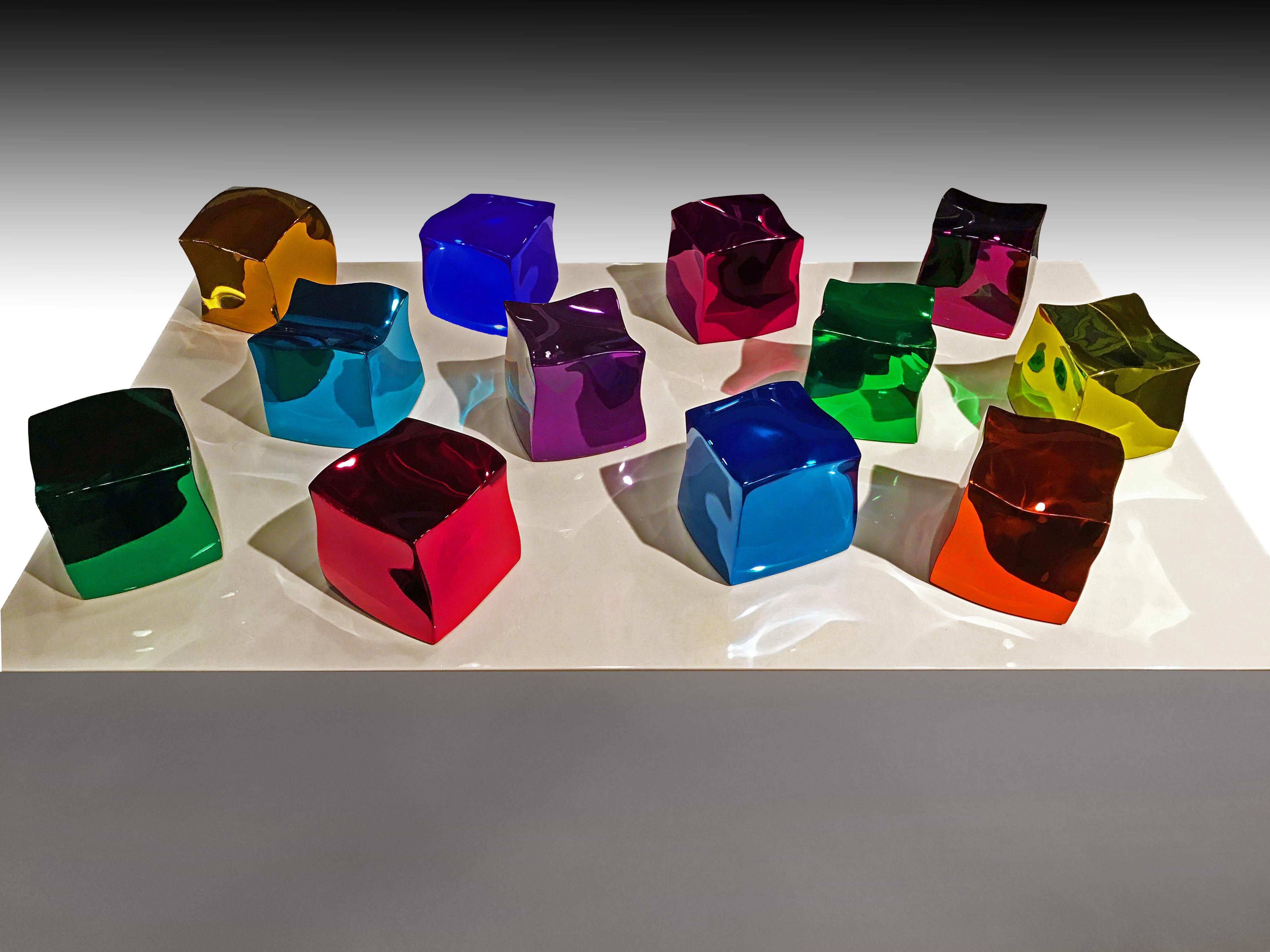Items Similar to Edgar Negret Mascara, 1994, Painted Aluminum, 87 x 87 x 32 cm
Want more images or videos?
Request additional images or videos from the seller
1 of 5
Edgar NegretEdgar Negret Mascara, 1994, Painted Aluminum, 87 x 87 x 32 cm1994
1994
About the Item
Edgar Negret
Mascara, 1994
Painted Aluminum
87 x 87 x 32 cm
34.2 x 34.2 x 12.5 in.
The artwork is signed and dated on the back and illustrated as follows:
Carlos Jiménez Moreno, Negret Escultor: Homenaje. Villegas Editores, Bogota, Colombia, p. 184, ill.
Edgar Negret was born in Popayan, Colombia, on October 11, 1920.
Negret used to work with Industrial materials, processing and sometimes recovering different mechanical forms turning them in exquisite’s pieces of Art, representing shapes form the Nature such as the Sun, a Flower, a waterfall.
During the 1940’s Negret attended the School of Fine Arts in Cali, Colombia.
Initial works where made in stone in patterns evocative of European modernists like Constantin Brancusi. He met the sculptor Jorge Otaiza, who influenced Negret’s vision and who introduced him to the modernist perspectives or vision of other artists from that time.
In 1949 Negret studied in New York and visit The Clay Club Center (Sculpture Center) where he met the artists Louise Nevelson and Ellsworth Kelly. By the early 1950s, Negret departed to Paris, where he had the opportunity to experiment and absorbed all the artistic scene from the city. He began working in metal following the constructivism tradition.
In 1955, one piece from that time was acquired by the Museum of Modern Art. In 1963, he returned to its native Country, Colombia, he won the Salon de Artistas Colombianos, becoming one of the most prominent Colombian sculptors of the 20th Century.
Negret’s work where exhibited throughout the world. To mention some of them, It was awarded at the the Bienal de São Paulo (1965); the Thirty-fourth Venice Biennial and was awarded the David E. Bright Sculpture Prize; presented his sculptures at Documenta (1968) in Kassel; the Stedelijk Museum, Amsterdam (1970); Museo de Arte Moderno, Bogotá (1971, 1975); Arts Club of Chicago (1972), and the Museo de Bellas Artes, Caracas (1973); the Center for Inter-American Relations (now Americas Society) in 1976; the Contemporary Sculpture Center, Tokyo (1982); Museo Español de Arte Contemporáneo, Madrid (1983); and the Museo Rufino Tamayo, Mexico City (1991)
In 2010, he was awarded “Grado de Oficial” by order of the Congress of Colombia.
Negret died, on his 92nd birthday, October 11, 2012 in Bogotá, Colombia.
- Creator:Edgar Negret (1920 - 2012)
- Creation Year:1994
- Dimensions:Height: 34.26 in (87 cm)Width: 34.26 in (87 cm)Depth: 12.6 in (32 cm)
- Medium:
- Movement & Style:
- Period:
- Condition:
- Gallery Location:Miami, FL
- Reference Number:1stDibs: LU1613210161522
About the Seller
5.0
Vetted Seller
These experienced sellers undergo a comprehensive evaluation by our team of in-house experts.
Established in 1989
1stDibs seller since 2021
Typical response time: 1 to 2 days
- ShippingRetrieving quote...Ships From: Miami, FL
- Return PolicyA return for this item may be initiated within 14 days of delivery.
More From This SellerView All
- 27 mayo 2011 48 -PurpleBy David Rodriguez CaballeroLocated in Miami, FL27 mayo 2011 48 Purple, 2011 Unique Piece Aluminium, Enamel 100 x 91 x 31 cm 39.3 x 35.8 x 12.2 in. About The Artist Born in 1970 in Pamplona, Spain. Madrid and New York-based art...Category
21st Century and Contemporary Abstract Geometric Abstract Sculptures
MaterialsEnamel
- 05 enero 2013 41 Black, 2013By David Rodriguez CaballeroLocated in Miami, FL05.enero.2013 41 Black, 2013 Unique Piece Aluminum, Enamel 105 x 85 x 25 cm 41.3 x 33.4 x 9.8 in. About The Artist Born in 1970 in Pamplona, Spain. Madrid and New York-based artist...Category
21st Century and Contemporary Abstract Geometric Abstract Sculptures
MaterialsEnamel
- Edgar Negret El Sol Rojo, 1985, Painted Aluminum, 250 x 244 x 80 cmLocated in Miami, FLEdgar Negret El Sol Rojo, 1985 Painted Aluminum 250 x 244 x 80 cm 98.4 x 96.1 x 31.5 in. Carlos Jiménez Moreno, Negret Escultor: Homenaje. Villegas Edito...Category
1980s Abstract Geometric Abstract Sculptures
MaterialsMetal
- Jorge Salas, You and Me Series / Soto, 2018, Carved and painted on woodBy Jorge SalasLocated in Miami, FLJorge Salas You and Me Series / Soto, 2018 Carved and painted on wood 125,7 x 95,3 x 6,4 cm 49.5 x 37.5 x 2.5 in. The "Tu y Yo" (You and Me) series is based ...Category
2010s Abstract Geometric Abstract Sculptures
MaterialsWood, Acrylic
- Jorge Salas, You and Me Series, 2019, Carved and painted on woodBy Jorge SalasLocated in Miami, FLJorge Salas You and Me Series, 2019 Carved and painted on wood Edition of 9 +AP 86,4 x 35,6 x 3.8 cm 34 x 14 x 1.5 in. The "Tu y Yo" (You and Me) series is ...Category
2010s Abstract Geometric Abstract Sculptures
MaterialsWood, Acrylic
- Maqueta Armonía de Volúmenes y Espacios, La HoyadaLocated in Miami, FLMaqueta Armonía de Volúmenes y Espacios -La Hoyada- BMPC-002, 1980(1982) Edition /25 Bronze 48 x 37 x 26 cm 18.8 x 14.5 x 10.2 in. ABOUT THE ARTIST Narváez was born in Porlamar, Venezuela, in 1905; he was the fifth son of eleven siblings; his parents were Jose Lorenzo Narváez and Vicenta Rivera. Don José Lorenzo, a multifaceted and creative man, sowed the seed of creativity in his son. “My father did not fit in with his fantasies of cabinetmaker, bricklayer, master builder, and self-taught architect.”1 From an early age, Francis was led to the artistic activity, he traced, carved, made replicas of the furniture and the saints restored by his father. In 1920 he obtained his first professional assignment, a San Rafael for the Church of Carupano, and, in 1922, his father authorized him to travel to Caracas to pursue his studies as an artist. He studied at the atelier of Marcos Castillo, at of the Angel Cabre y Magriña and at the Academy of Fine Arts in Caracas, where he was introduced to the painters and intellectuals of the time. In 1928 he presented his first solo exhibition at the Club Venezuela. With the money raised from the sale of the works and the support of Monsignor Sosa, and the Ministers Centeno Grau and Arcaya, he studied in Paris on a scholarship. Once there, he enrolled at the Académie Julian, where Tito Salas, Cristóbal Rojas and Arturo Michelena had also studied. It was in Paris where, unable to work in wood, he turned to stone carving. “In Paris, I didn’t have wood, so I carved a lot in stone (…), when there were demolitions I purchased chunks of stone, I would take them to the workshop and carve them.”2 His first attempts at volumetric sculptures and painting in plain colours, linked to the thematic of American miscegenation and Creole reality, can be traced back to that first trip to Paris. During his stay in the French city, Arturo Uslar Pietri, Alfredo Boulton, and Finita Vallenilla supported the artist both financially and logistically, and in February of 1930, the trio of friends arranged another exhibition for him at the Club Venezuela. Narváez describes his exhibition as follows: “(…) in it I feel that the sculptural work is more my own, done with more assurance, a response to my pursuit of large planes, stylisation and synthesis.”3 By then, as Boulton himself noted in his book about the artist, Narvaez departed from most of the artistic traditions that prevailed by that time in Venezuela. In 1931 he returned to Caracas and established his atelier at the Barrio Obrero in Catia. The atelier became the hub of the intellectual life of the time. “In those years, the atelier of Francisco Narváez was the hub of the greatest Venezuelan hope. Nothing comparable to it can be found either before or since.”4 From that year onwards, exhibitions, projects, trips, and awards we multiplied. He was awarded the President of the Republic of Venezuela Prize, the National Sculpture Prize of the 1st Official Venezuelan Art Salon, and the John Boulton Prize of the 3rd Annual Venezuelan Art Salon; for the Military Academy, he produced a spectacular relief entitled La Patria. In 1945, commissioned by the architect Carlos Raúl Villanueva, he produced two groups of sculptures known as Las Toninas, both located in the O’Leary Square. There, as he himself states, he incorporates some baroque patterns into the figures to the source itself: “It is a work of balance between the decorative requirements and the sculpture of planes and angles.”5 In 1948 he was awarded the National Painting Prize. In the same year, he was called upon by the architect Carlos Raul Villanueva to participate in the project for the arts integration in the Universidad Central de Venezuela. Francisco Narváez’s public output continued with works such as the statue of Fermín Toro, La Educación, La Ciencia, three murals (produced by María Luisa Tovar) for the Instituto de Medicina Experimental, El Cristo; el Atleta, the equestrian statue of General Rafael Urdaneta. In 1953 he was appointed Director of the School of Plastic and Applied Arts, and in July of the same year, he exhibited “Francisco Narváez, Maderas, Piedras y Bronces” (Francisco Narváez, Woods, Stones and Bronzes) at the Museum of Fine Arts. Narváez is, unquestionably, one of the great Venezuelan sculptors, his work goes through various stages and interests; as the art world evolves, the artist does not remain in his initial scopes of work. His creations are not imposed by the prevailing trends or fashion but do evolve by experimenting with new materials and interests. When one peruses the artist’s lengthy list of exhibitions, commissions, and awards, it is worth remembering the Narvaez who embark on his career as a child and who, overcoming obstacles, knew how to make the most of his curiosity. He did not settle for living off his successes. He did not remain stagnant as many creators of his environment did. Narvaez managed to understand the changes in the history of art around him. We must not overlook the fact that Francisco Narvaez is an artist amid all the changes occurring in the art world. He moves from the classics to the great transformations in the art world. It is the Europe of Picasso, Braque, Arp. He observes, he is aware of what is happening in the centres of the world of art, but between his craft and his sensitivity, the result is NARVAEZ, his stamp, and his identity. Francisco Narváez comes from tradition, and his first stage is linked to the classics, to the exploration of his heritage, but always with his very own language. Throughout his prolific career, he knew how to remain true to himself, without disregarding the influences of his surroundings or his artistic interests: his ability as a sculptor, his selection of materials, whether they were wood, stone or bronze; his choice of the subject of his work…His mastery and great craftsmanship are a constant that over time have made him a leading player in the history of contemporary Venezuelan and world art. From his beginnings, no subject was foreign to him. His paintings, drawings, aquarelles, and sketches are testimony to his prolific output. Among his themes are portraits, our traditions, still lifes, and landscapes. Narváez is an artist who represents his time. Later, he evolved towards purer and simpler forms, abandoning figurative art for short periods. In 1956 he declared to the newspaper El Nacional: “Every day I am freeing myself, it is a soul that frees itself from the ephemeral wrappings of the circumstantial always, as well as from the inevitable weight of the anecdote. This second stage of my work is remarkably close to abstractionism, even if there are still certain figures or figurations in the sculptures that I will shortly be showing. However, pure, and absolute abstractionism, it will treat the form itself as the sole reason for its existence on the plane of artistic excellence.”6 The artistic development was his professional life. Each period of his life as an artist, he went one step further, searching, solving, seeing plenty of things and understanding how diverse expressions were transforming themselves. His hands followed his gaze and his mind, always inquisitive. He added movement to the volumes. Arturo Uslar Pietri, “Formas Nuevas”, Cromotip editions, 1956 “Francisco Narváez is a path: the path that Venezuelan sculpture...Category
1980s Abstract Abstract Sculptures
MaterialsBronze
You May Also Like
- Abstract #621 - Metal Wall SculptureBy Kue KingLocated in Blowing Rock, NCAged bronze and brass. 60"x60"x4" Search "Kue King" to see entire collection of 30+ sculptures. Kue King created this wire sculpture using pure metals manufactured with a diamond...Category
2010s Abstract Geometric Abstract Sculptures
MaterialsMetal, Bronze, Wire, Brass
- Liquid State (Inhale)By Jonathan PrinceLocated in Lenox, MALiquid State (Inhale) 22" x 22" x 22" High Chromium Stainless Steel Unique $160,000Category
21st Century and Contemporary Abstract Geometric Abstract Sculptures
MaterialsStainless Steel
- Liquid StateBy Jonathan PrinceLocated in Lenox, MALiquid State (Exhale) 22" x 22" x 22" High Chromium Stainless Steel Unique $160,000Category
21st Century and Contemporary Abstract Geometric Abstract Sculptures
MaterialsStainless Steel
- Shatter StainlessBy Jonathan PrinceLocated in Lenox, MAShatter Stainless 14.5" x 8.5" x 8.5" High Chromium Stainless Steel Unique $60,000Category
21st Century and Contemporary Abstract Geometric Abstract Sculptures
MaterialsStainless Steel
- Turbulence IVBy Jonathan PrinceLocated in Lenox, MATurbulence IV (Sculpture) 96" x 8" x 7" High Chromium Stainless Steel Unique $160,000Category
21st Century and Contemporary Abstract Geometric Abstract Sculptures
MaterialsStainless Steel
- Jello SpectrumBy Jonathan PrinceLocated in Lenox, MAJello Spectrum 6" x 6" x 6" High Chromium Stainless Steel, Tinted Clear Urethane Color Unique Each $24,000 Available in a variety of colors Purchase full rainbow collection of seven ...Category
21st Century and Contemporary Abstract Geometric Abstract Sculptures
MaterialsStainless Steel
Recently Viewed
View AllMore Ways To Browse
Aluminum Painted Sculptures
Mechanical Sculpture
P 32
Stone Flower Sculpture
Modernist Stone Sculpture
Modern Metal Flower Sculpture
1920s Metal Flowers
Metal Sun Sculpture
Metal Flower Painted Sculpture
Kelly P
David Kelly
Waterfall Sculpture
Modern Sculpture By Carlos
1940s Kelly
Bella Venice
Carlos David
Vintage Cali
Kelly 32 Gray
